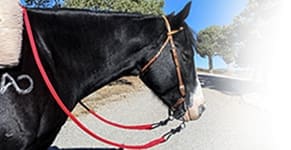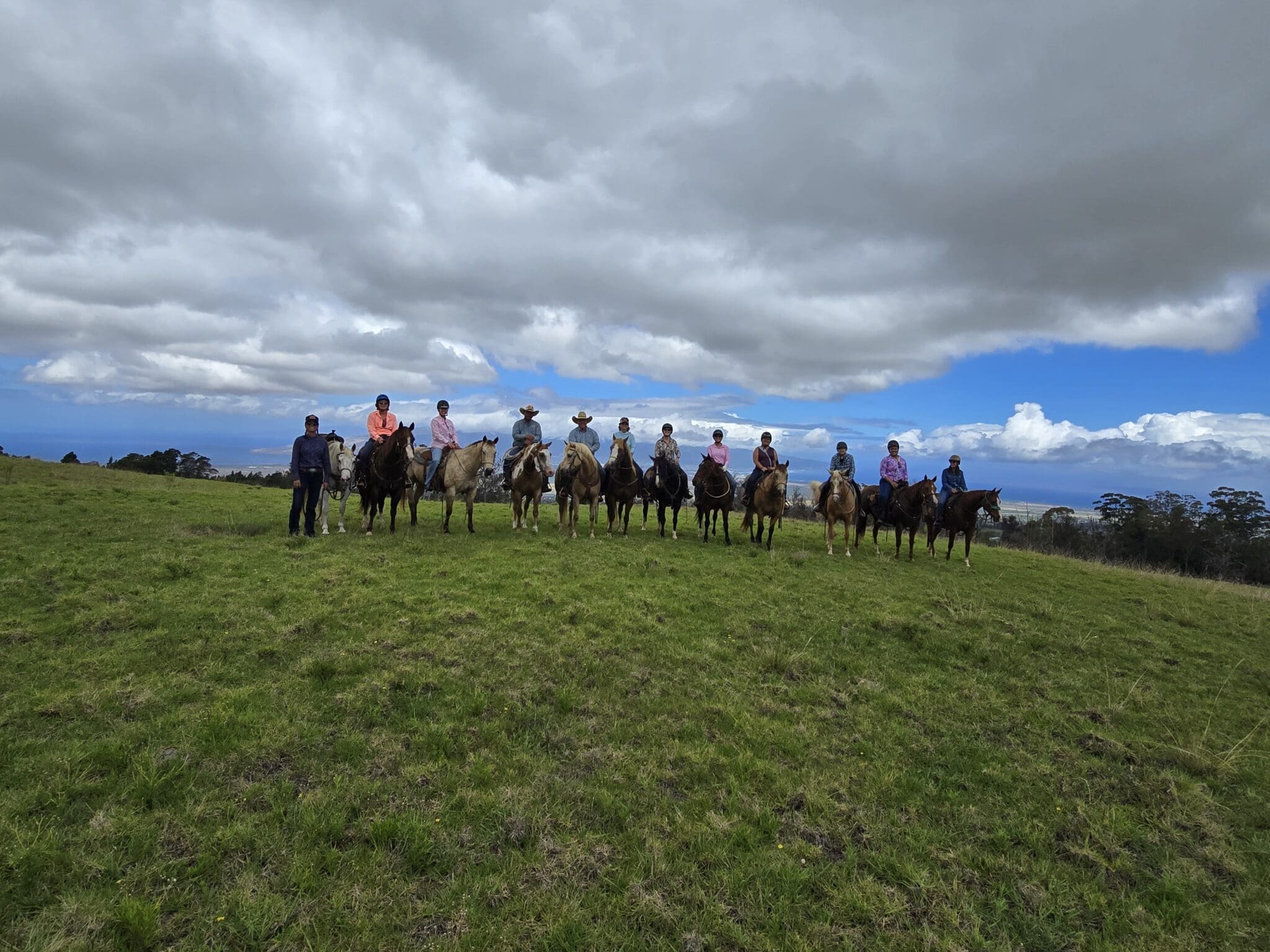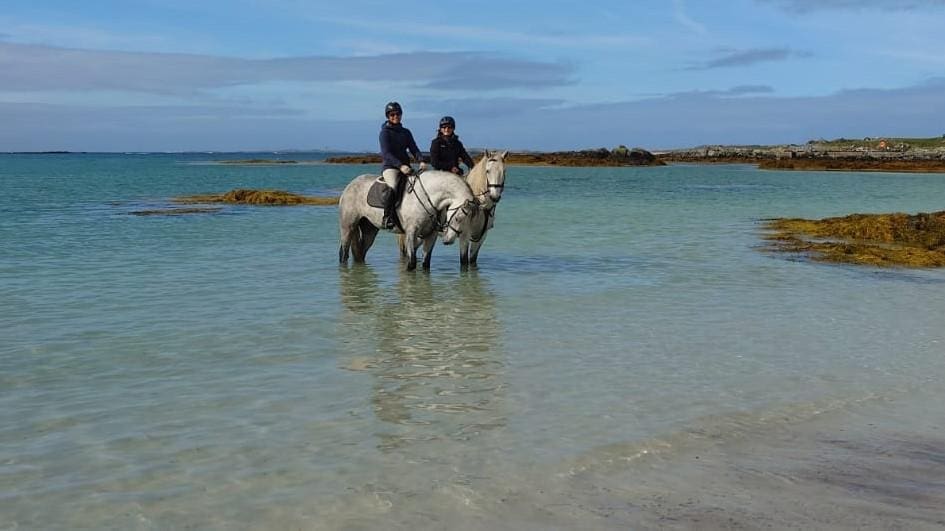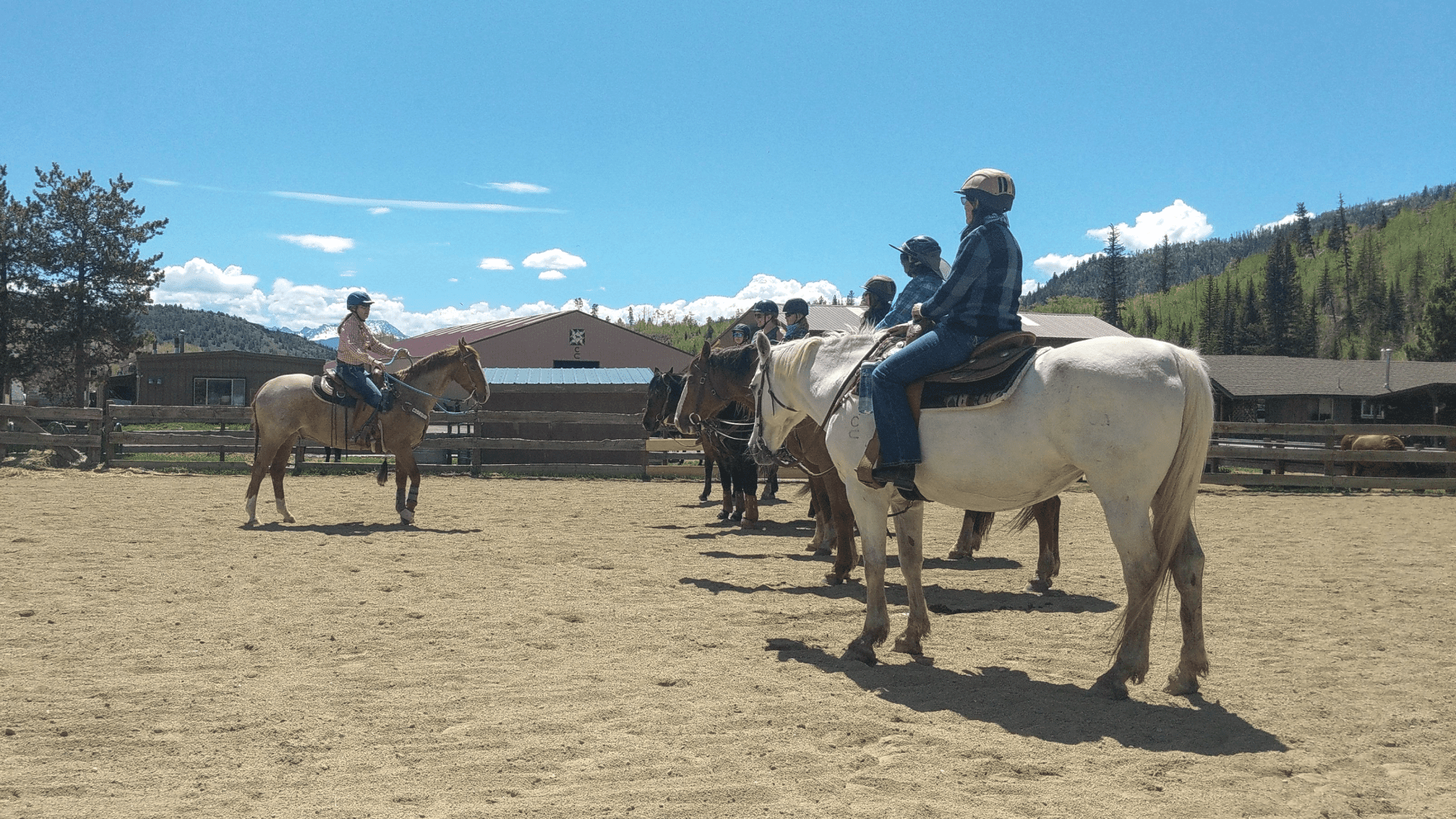

*Brand New* Red Rope Reins & Leads | Complete the Collection!
We are now four months into Horse Goals or Bust!, and we still have half a year left to fulfill our dreams and achieve our equestrian aspirations! Last month, we addressed horse and rider fitness, and by now you should be well into your fitness routine. It takes time to reap the rewards of a fitness plan, just like it takes time (and lots of it!) to increase the ability and performance level of the horse and rider.
This month, we’ll assess your riding ability, and I’ll help you develop a plan that targets the most important aspects of your horsemanship training that relate to your goals. And since homework is an essential part of this program, I’ve included a worksheet to help you organize your thoughts!
Click here to download the worksheet or get everything you need to get started!
One of the biggest draws of horse sports is the unique bond that’s possible between horse and rider–the so-called “mind-meld” that occurs between horses and riders, when they can synchronize their minds and bodies, performing together as one. No one in the history of horseback riding ever achieved this kind of deep connection on the first ride, but with persistence and dedication, it’s quite doable.
Toward this end, and any worthwhile endeavor with your horse, it is likely to entail raising your personal skill-level as an equestrian, increasing your intellectual knowledge of horsemanship, and building your confidence level in your chosen endeavor.
For your horse, it’s no different—we call it horse training. In my podcast this month, I’ll focus on evaluating your horse’s current training level and experience, and on developing a six-month training plan that sets you and your horse up for success. But first, let’s take an honest and thorough look at where your horsemanship skills are today and where to focus our efforts over the next six months of your personal training!
Experience Matters
We say it time and again: horsemanship is about the journey, not the destination. There could never be a destination anyway, because the farther you get on this journey, the more you come to realize how much more there is to know. There’s no such thing as a perfect rider, every horse you encounter is different, and going into new situations with horses always brings new challenges, even with the steadiest mounts. You learn something new every day with horses.
Therefore, the more hours-days-weeks-months-years you accumulate with horses, the smarter you get. To make it simple, let’s just stick with counting the days. In the past year, how many actual days did you have your butt in the saddle for 30 minutes or more? If you go back over the years since you started riding and make an honest estimate of your days in the saddle and the number of different horses you’ve ridden, it will be very illuminating!
I require my online students to go through the same calculation, regarding their horse’s training, based on what you know or can guesstimate about your horse’s history. Occasionally someone balks at going through this exercise, as if it’s a frivolous waste of their time. But in fact, this number tells me more about the horse than any dissertation you could write on your horse. It’s one reason we refer to the quantity of a horse’s training in 30-60-90-120-day increments—we know how long it takes to get a result.
It takes about 365 days, or a full year, of professional training, to prepare a horse for specialized competition (not to win it, just to complete it). That’s a gross generality, but it puts horse training into a time perspective.
On the other hand, a horse might be 12 years old, but when you do the calculations, you discover it’s only had about 90 days of riding, spread out over 8–10 years. Even if that 90-days were done by the best horse trainer in the world, it didn’t get you much training and you have a VERY green horse. That number (total rides in its lifetime) puts the horse’s training level into clear perspective for me.
So, sit down with pen and paper and do the math on your own riding career—total number of days in the saddle for a half-hour or more. Start from the beginning and estimate the number of days and how many horses you rode over that time. This will give you a great perspective on where you are on the continuum of horsemanship and help you develop a training plan for yourself that is realistic and impactful.

Be the Leader of Your Herd
As your horsemanship improves, so does your horse!
Improving Equitation
Before embarking on a plan to ride better and achieve new goals, let’s take a moment to gauge your current horsemanship level. As equestrians, we all ride different disciplines and various breeds of horses, and our experience levels vary from one year to fifty years in the saddle. We each have different strengths and weaknesses we bring to the saddle and vastly different goals, from “gaining more confidence,” to “go on an overnight camping trip with my horse” or “making the top-10 in a World show.” Consequently, each of our training strategies will be unique.
Whether I am teaching virtually or in-person, there are a few critical aspects of equitation that I must assess immediately, to coach the rider effectively. Read through the following aspects of equitation, with your own riding ability in mind, then score yourself on the accompanying worksheet.
Balance in the saddle requires ear-shoulder-hip-heel alignment. Most of the time, this line is vertical, or perpendicular to the ground. When riding in a forward seat, the lower leg stretches back to maintain alignment and balance. Often, when riders present out-of-balance, the lower leg is too far forward, pushed out in front of them. Or, the rider is perched forward (heels up and squeezing), in front of the motion of the horse (in front of its center of gravity). Riding entails a dynamic balance, a balance in motion, a synchronization of the balance of two animals. Out-of-balance riders tense their muscles to maintain balance (expending far more energy than necessary) and they have more frequent unscheduled dismounts. Learn more.
Riding Position includes the details of balance plus proper hand position—a straight line from the rider’s elbow to the horse’s mouth. Most equitation errors are posture related. If the rider’s skeletal system is aligned (remember: ear, should, hip, and heel alignment) and the tailbone tucked under (open pelvis and rounded lower back) and the hands are low, forward, and relaxed, they are in good position. Balanced riders are relaxed and will stay on the horse effortlessly. Tense muscles lead to locked joints, which leads to bouncing in the saddle. Learn to seek out the source of your tension and relieve it. Learn more.
Communication and Control are almost as important as balance and position. For the most part, trained horses are willing to go, turn, and stop without argument. Often a horse perceived as “out of control” is actually a rider giving conflicting and inappropriate cues. Cues should be clear, consistent, systematically sequenced, and reinforced when necessary. Many riders do not have a full understanding of the aids of the rider: the seat, legs, hands, and voice. Beyond cueing, the rider must have acute awareness of the horse’s responsiveness and obedience, as well as the leadership skills that give you authority. Learn more.
Trot Skills are some of the trickiest parts of riding to learn. There are three ways to ride the trot–posting, sitting, and standing. The latter requires excellent balance, and the first two take a lot of practice! Many riders learn to post incorrectly by pushing up from the stirrup, instead of rising from the thighs and using the trampoline effect in the horse’s back for the lift. Sitting trot, particularly on big horses, is one of the hardest skills to learn. In most cases, if riders are bouncing, they are pushing on the stirrup (creating tension), closing the pelvis (arched back), and leaning too far forward. One secret to sitting the trot, is to sit behind the vertical. Be advised that if you strictly ride gaited horses that don’t trot, you may be missing out on fully developing your equitation skills. Learn more.
Canter Control is the final act to master, and for some riders, it’s the scariest gait. The rider must first learn to sit the canter and stay with the horse, then master the very complicated canter cue, learn leads, and canter departures. Next, the rider learns to control the canter in circles and turns, then add collection, lead changes and the advanced maneuvers of the chosen discipline. There’s a lot to learn and it takes years to master. Learn more.
Collection and bending are the commencement of advanced horsemanship. Once a rider has balance, control, and the ability to ride effectively in all three gaits, advanced use of the aids begins. Collection involves a rounding and shortening of the horse’s frame, in order to transfer weight off the forehand and onto the hindquarters. Collection rebalances the horse and makes higher-level maneuvers possible by engaging the horse’s engine (its hindquarters). Bending properly, or arcing through the turn, is imposed on the horse by the rider with excellent balance and effective use of the aids. When left to their own devices, horses prefer to lean their shoulders into the turn, rushing around the corner out of balance. Learn more.
Advanced Maneuvers are at the “finish” level of horse and rider training, and this is where we get more discipline-specific in our riding skills. The English horse may focus on lateral movements, collection and extension, or jumping. The Western horse learns to spin, rollback in a 180* turn, side-pass over a log, or rate a cow’s speed. This is “getting into the weeds” of your chosen riding activity and usually requires professional coaching.
By breaking down your physical skill set, and looking at each aspect of horsemanship separately, it will help you develop your plan of action. You may decide you need basic horsemanship lessons on a ‘made’ school horse, occasional group lessons with a local instructor, or to attend specialty riding clinics with experts, or do self-evaluation with videos, or find an online coaching program. Whatever route you take, you’ll want to get the biggest bang for your buck. Always get your basic skills in order before moving on to a higher level or specialty work with horses. Remember, no one ever reaches a level of riding where they no longer need coaching.
Enhancing Your Book Smarts
There’s way more to riding horses than just physical skills. Riding theory, horse training methods, horse behavior, rule books, specialized tack and equipment, and the standard operating procedures of a riding discipline must be researched and studied. It’s unlikely anyone will spoon-feed you the information you need to excel in your horsemanship—you must go find it yourself.
I recommend studying classical horsemanship—that body of knowledge that has survived thousands of years of horsemanship and is the basis of all that we know about riding horses. Scour the internet, take online courses, read books, attend lectures, and audit clinics with your notepad in hand.
Building Confidence
For many riders, building or regaining confidence is the number-one priority. It’s common for riders to have a depth of skill and experience, but essentially be paralyzed with fear. If that’s the case, you don’t need better riding skills, but to focus on your mental skills instead. If you are venturing into a new discipline or starting a relationship with a brand new horse, you may need to think about how you will build confidence in these areas.
First, think about your current level of confidence with your horse. Where does your comfort zone begin and end? Not generally, but specifically. Are you comfortable riding at all three gaits? Are you comfortable on the ground, but not in the saddle? In the arena but not in the open or not in front of a crowd?
The crazy thing about equestrian sports is that the rider’s confidence has a direct impact on the horse’s behavior. Whether you are venturing into bold new territory with your horse or trying to regain lost confidence, the time you spend developing your mental skills and emotional IQ, is time well-spent! Learn more.
Consider Your Available Resources
Before you can finalize your personal equestrian training strategy, you need to think through some collateral issues and what you can realistically bring to the table. Start with your personal vitality– your energy level, any physical limitations, your attitudes, your personal motivation. Focus on your strengths.
What kind of time commitment can you devote to improving your horsemanship skills and knowledge? The demands of life can be huge, and you don’t want to set unattainable goals. Even if you can only devote one late night a week to study and one Sunday morning to ride each week, come up with a plan you can stick to. Maximize your opportunities, commit to a schedule, and make it happen.
Resources—money and access to appropriate facilities, professional trainers, and a capable truck and trailer—must be considered before you make a training plan.
Even if you find you are limited by any of the above, don’t count yourself out—get creative! There are plenty of free or low-cost resources out there. Online coaching is a great option if you can’t get to a trainer. Auditing (or observing) a horsemanship clinic is typically inexpensive, and you can attend most horse shows as a spectator for free. You can learn a lot by watching and listening.
Your Personal Training Plan
After all of this thinking and planning, you should be able to develop your plan, which you will enact over the coming months. If your dreaming, goal-setting, fitness plan and skill-building plan all work together, you’ll reach your big, audacious horsemanship goal by the fall.
Make sure your training plans includes these important aspects:
- Block off time on your calendar that is devoted to your plan
- Include hands-on training like riding lessons and/or horsemanship clinics
- Time devoted to intellectual learning—research, read, online courses
- Research discipline-specific rule books, standard operating procedures, specialized
- Tack and equipment—its purpose, function and proper adjustment
Make a plan, get it in writing, ink it into your calendar, and get started now! Having a plan and embarking on this journey is fun and rewarding, in and of itself. Getting somewhere with your horse and your riding, improving your skills, and enhancing your relationship with your horse are the happy side effects!
Enjoy the ride!




